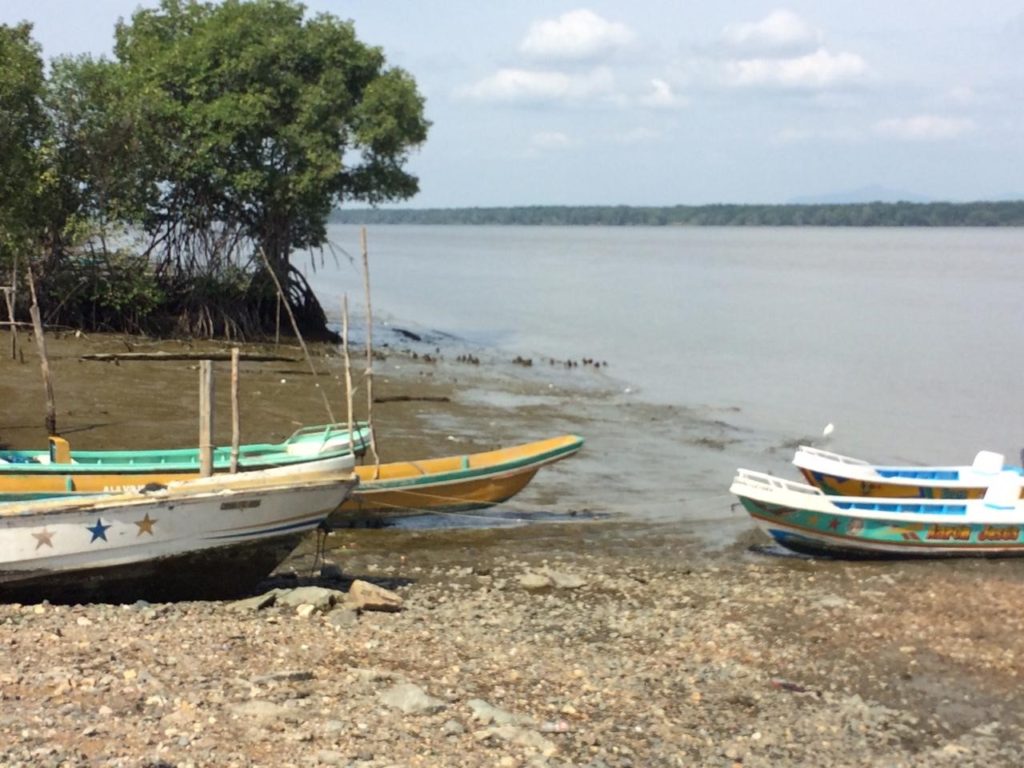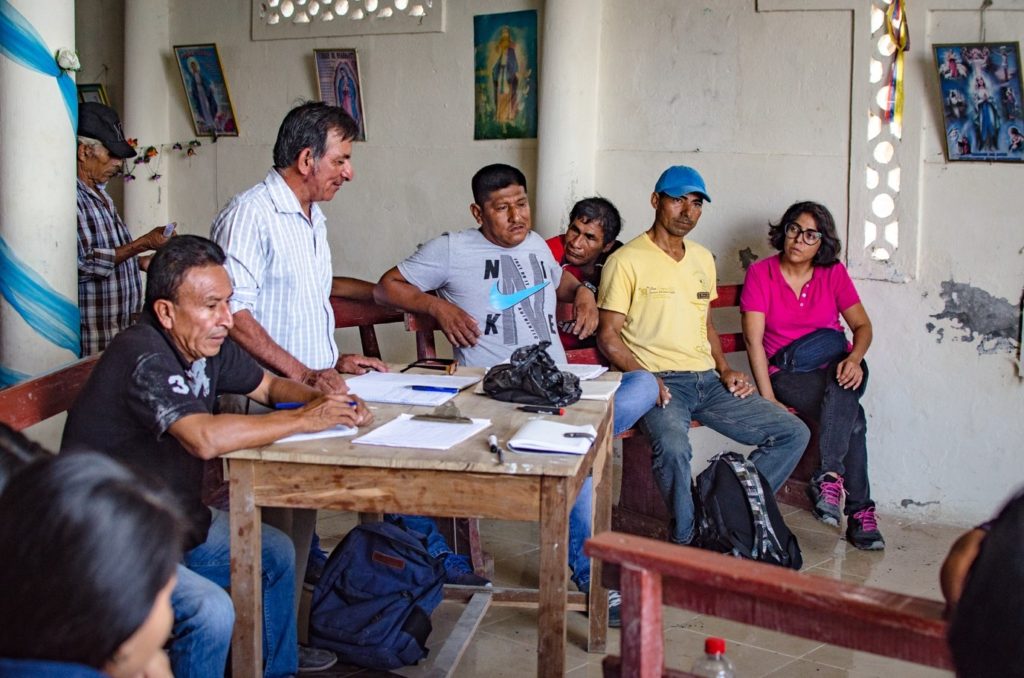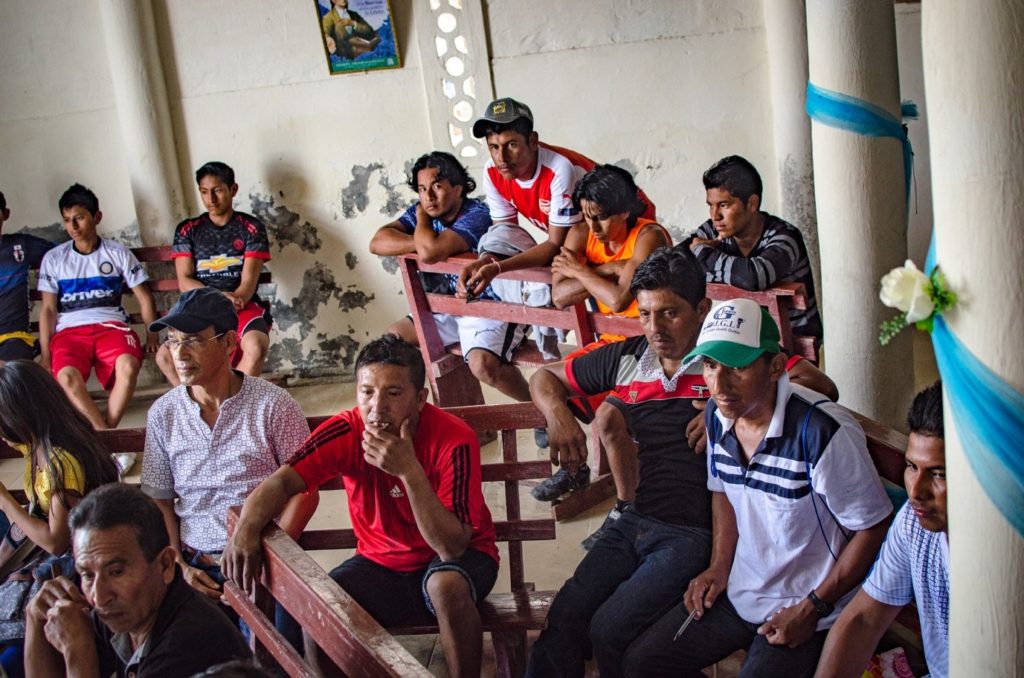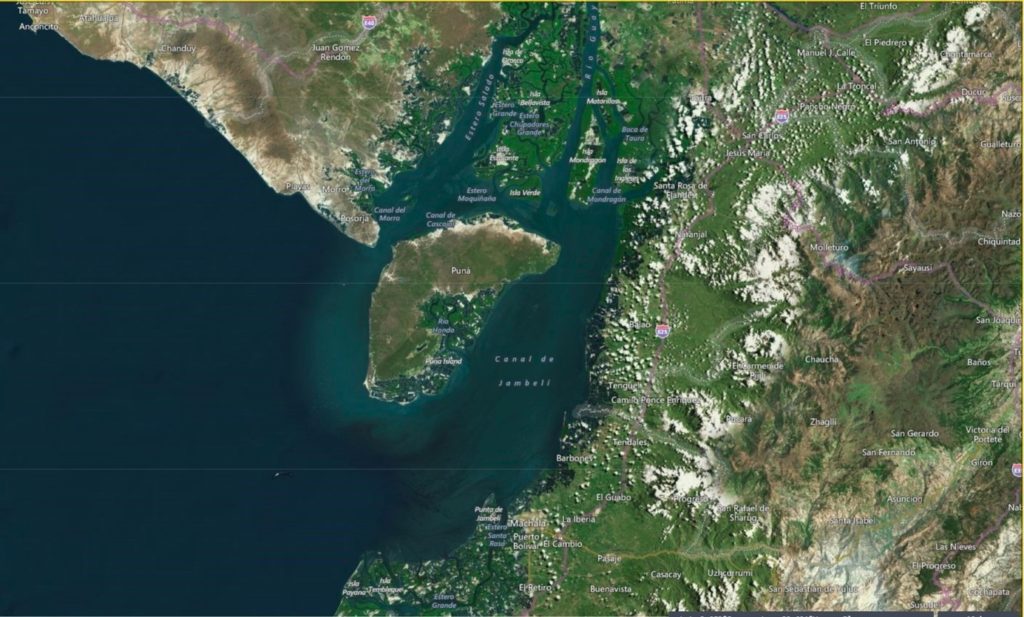JJ Alumna’s Path to Environmental Justice Work


Wendy (right) at community meeting;
picture by Vicente Gaibor
Community meeting view;
picture by Vicente Gaibor
Alumna’s John Jay education helped prepare her for her environmental justice work.
ECUADOR
The Gulf of Guayaquil endangered by socio-ecological conflicts and climate change.
by Wendy Chávez[1]
Ecuador is also known as the “middle of the world,” because it is crossed by the Equinoctial Line, which divides the world between the north and the south. It is a country full of biodiversity in all its four natural regions; coast (“la costa”), highlands (“la sierra”), the amazon (“la amazonía”) and the Island region (las islas Galapagos). This story is focused on the coast of Ecuador, specifically in Guayaquil city, which has a Gulf that is the host of ancestral communities that depend on mangrove resources. I am a proud Ecuadorian who would like to share these lines with you on the John Jay College website, exposing the case of the Gulf of Guayaquil and telling the story about how I got to work in this area after my Master of Public Administration (2004) at JJ.
I must say that what I learned in the Master of Public Administration was a fundamental input for my career; I studied it when I was young and had experience only as a professor, but not in the public sector. When I say that the MPA was fundamental I mean that it was the core of my values and my principles during my 10-year career in the Ecuadorian public sector. When I started it in 2007 I had reflected so much about the values of fairness and justice that were enforced by my John Jay College education. My background at JJ was in fiscal policy, so I worked and travelled to many municipalities of my country, identifying good practices of tax collection and local investment, and producing guidelines for the municipalities that needed help. In this way my path in “technical assistance” started.
Today, 15 years after leaving John Jay, I still work in development with communities and civil society organizations by giving technical assistance to a handful of them. My life took a new path when I studied a Master of Human Settlements in Belgium (2018), after which I was able to rethink my career and knew that it was time to support other actors that are also key for the development of my country. I have to say that the knowledge and experience on which I have based my work in the public sector, has shaped who I am at this moment, and I keep teaching subjects like “public administration,” “local planning,” and “critical thinking” with cases applied to the Ecuadorian context, but also with international cases and reflections I learned from my professors at John Jay, especially Joan Hoffman, Marilyn Rubin and Robert Sermier.
The geographic area where I work, the Gulf of Guayaquil, is a very fragile ecosystem that is constantly endangered by different socio-ecological conflicts. One of these conflicts is directly related to the government, because the local governments to which the Gulf belongs, like Guayaquil city, have not given to the local communities the coverage of basic needs such as potable water, sewage, and waste collection. On the other hand, the central government that is in charge of protecting the mangrove ecosystem does not act efficiently when there are reports made by the communities about mangrove-felling, which is crime, but a mostly unpunished crime.
In the following picture we can
see the Gulf of Guayaquil, located between the Estero Salado (brackish water)
and the Guayas River (fresh water), that together shape the characteristics of
this rich ecosystem. Guayaquil city is located in the upper part of this
picture, and it is particularly important for this article because it will be
facing serious challenges due to climate change.

Guayaquil is one of the cities that face a high average annual loss of its GDP in the future, and according to some projections it will have the third greatest rate of loss in the world (Hallegatte et. al, 2013). Guided by this and other information about climate change projections, I started studying the impact that climate change will have on the Gulf of Guayaquil, and I presented them in my master thesis “Socio-ecological conflicts and the challenges of climate change” (2018). It shows how climate change will amplify the socio-ecological conflicts of the region.
The socio-ecological conflicts are illustrated in the following animated video that was prepared to increase awareness and consciousness about them. This video was made with the cooperation of Freddy Barreiro, Ecuadorian graphic designer:
Even though I am describing three socio-ecological conflicts in the video, I want the John Jay readers to reflect particularly on the third conflict, which is the conflict with the government. Overexploitation and contamination of water bodies and mangrove resources undermine the livelihood of the communities, but also and importantly, the lack of compromise of the public sector reinforces and amplifies the diminishment of their livelihoods. My work on the claim for social justice I do from the communities and with Fundación Cerro Verde, a local NGO that assists the communities in the search for solutions to these conflicts.
What I studied at JJ helped open my eyes to the inadequacies of and malfeasance in the provision of government services, and inspired me to always fight for a better country and a better public sector. The fight is still ongoing, and thanks to my education and what I learned from great professors, I am still here.

Small bridge in Isla Bellavista Ecuador. Picture by Wendy Chávez, 2019.
[1] John Jay College Alumni from the Master of Public Administration (2004).